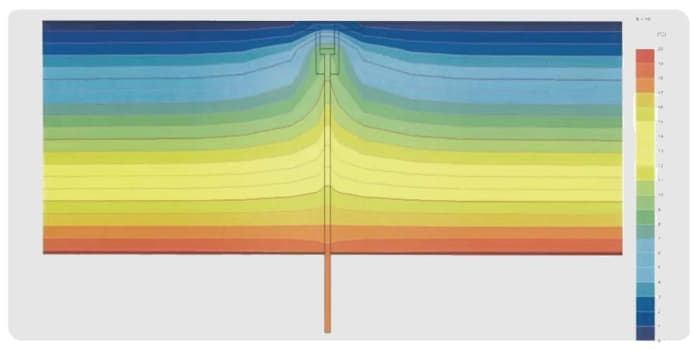What is thermal bridging on flat roofs?
- Read time: 4 minutes
- Date: 24 Jun 2021
- Flat Roofing
- Living Roof
A thermal bridge (also known as a cold bridge, heat bridge or thermal bypass) takes place when heat is transferred through part of the building fabric with significantly lower thermal resistance than the rest of the building envelope. This usually occurs at points where there is less insulation, a break in insulation or where the insulation has been penetrated by an element with increased thermal conductivity. Thermal resistance is a measure of how well a material resists heat flow, while thermal conductivity is a measure of how well it conducts heat.

Why is thermal bridging important?
In cold weather, heat flows from the warm internal temperature towards the cold external temperature. When it is hot, the reverse is true, with the heat from outside flowing into the cooler internal environment. As heat is lost or gained, more energy is needed to heat or cool the building, leading to higher utility bills.
In modern buildings, insulation is used in the walls and roof to prevent this flow of heat, keeping the warm air inside. However, in well-insulated buildings, thermal bridging can be responsible for up to 30% of the heat lost. It is therefore important to use construction methods that prevent thermal bridging.

How does thermal bridging affect my use of fasteners in flat roofing applications?
Fasteners are made of carbon or stainless steel which have very low levels of thermal resistance compared to insulation. This means that if fasteners penetrate the insulation to secure into the structural deck, as they do in flat roofing construction methods, a thermal bridge is created. In cold weather, warmth (heat energy) from inside the building will travel along the fastener and escape.
How can thermal bridging be prevented when using fasteners on flat roofs?
It is considered best practice for thermoplastic tube washers to be used to prevent heat loss through the fastener in flat roofing applications. Insulation manufacturers carry out U-value calculations assuming tube washers will be used. If tube washers are not used a correction factor will be applied which results in thicker insulation being specified. So, using tube washers not only saves time at the design stage but also the additional cost of thicker insulation.

If for any reason it is not practical to use tube washers, then we recommend using fasteners and pressure plates manufactured from stainless steel because this material has a lower thermal conductivity than carbon steel.






